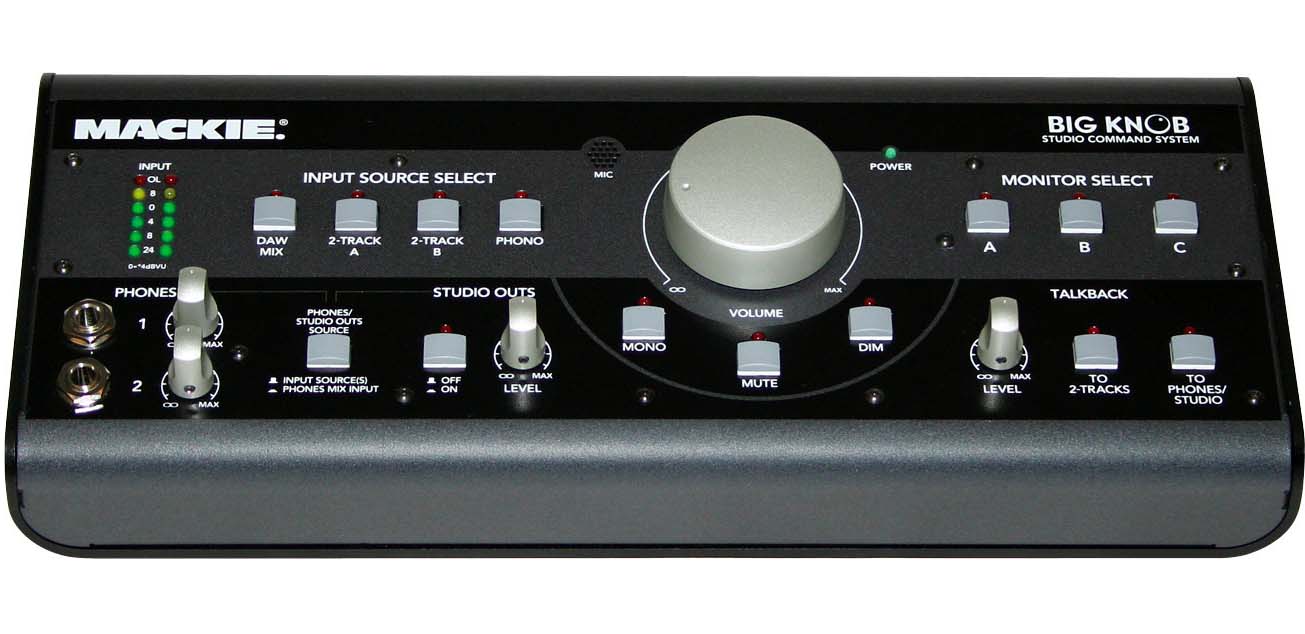Many of you will know what it was like to operate a large mixing console and have all you monitoring needs at your fingertips in the bus section. Some of you still do, I am sure.
My console doesn’t see much use these days, with most of the work being done directly into the computer with a smaller setup, as is most likely the case for many of our readers. The fact is, most people recording at home do not have the space or the finances to spare to have a large format mixing console in the home studio. And given that, very few of us actually have the need for it anyway. A good channel strip, or a few pieces of select outboard gear is usually all that is needed in these situations, until you consider your monitoring. That is the one facet of the large mixing console that the home studio misses out on. But there are alternatives.
FINGERTIP CONTROL
With all the advances and benefits that the computer has given us in audio recording and mixing, it has taken away in certain areas. The main problem that arose with the advent of the computer DAW was the lack of hands-on control. As recording programs became more and more involved, less and less seemed to be going on with any hardware as most applications get drawn into the software world. What results is a greater reliance on the mouse and an almost endless collection of keyboard shortcuts to keep your mind working. As each piece of hardware slowly gets replaced by a computer process, we lose a little bit of that organic workflow. The touch and feel of a project slowly starts to become the click of a mouse and an almost robotic process develops, which ultimately has a negative effect on the creative processes. Music comes from the heart, and through the hand, so let’s not cut off the hand that feeds it. Bringing back some of those essential ‘hands-on’ processes in the recording and mixing regime will ultimately improve the workflow and have a carryover effect on the creative side of things. Let’s get back to pressing buttons, tweaking knobs and turning dials.
ORGANIC LISTENING
I have mentioned how the computer has removed some of the organic workflow and created a robotic process, and this is not ideal for creativity. Especially when we are listening to emotions and trying to adjust the sounds we hear to capture those emotions at their best. So, it is vital that our playback schedule is allowed to be as organic a process as possible. You should be able to close your eyes and start playback, stop it, repeat it and adjust it all without looking at what you are doing. This way, by shutting down one of our senses, we allow the others to be emphasised. It is pretty hard to start and stop playback with a mouse when you can’t see where it is pointing.
It’s even harder to find the Mono switch in the software with your eyes shut. But, with a small, tactile control surface on your desktop, you can take control of what you hear in playback and adjust it accordingly. Best of all, you are able to switch from one set of speakers to another, drop the volume, flip it over to Mono mode and back to Stereo and do all this with your hands. It doesn’t take long to learn a simple controller and soon you can do it with your eyes closed, literally.
Now, think of what this can bring to your critical listening in the mixing process. You don’t need the large format console if you are only going to use a small section of it. That is why there are a number of monitor controllers on the market designed to accommodate critical listening in the home studio. What’s more, they operate after the inbound signal path, so they will not have any effect on your recording should you be concerned about audio quality.
A cheaper monitor controller, or poor audio cables running to and from it are not ideal, but they will not tarnish the audio recording in any way. That said, you should still consider that they play a part in how you hear and ultimately adjust the sound, so adding noise or allowing loss of quality in the signal chain at this stage still is not ideal. For those of you who remember the Mackie Big Knob, this is one such controller that turned up in studios all over the place.
Now brands like Behringer, JBL, PreSonus and Radial all offer similar devices for exactly this purpose. It is really a matter of determining your needs now and in the future as to which is going to better suit your mixing requirements. Many of you will be recording and mixing with just one pair of monitor speakers and may consider it unnecessary as switching is not an option for you. But, switching between monitors is only a small part of what these devices offer. In fact, every home studio operating with just one pair of studio monitors can greatly improve the way they listen with a monitor controller too.
Functions such as Phase Reversal, Mono and fixed volume Dimming are all very important to achieving a quality mix and need to be done on the fly, without searching around a computer monitor with a mouse pointer. So, the next time you are listening to a mix directly from your interface into your studio monitors, have a think about what you are hearing and what you could be hearing.
Next, check out our guide on Monitor placement here.







